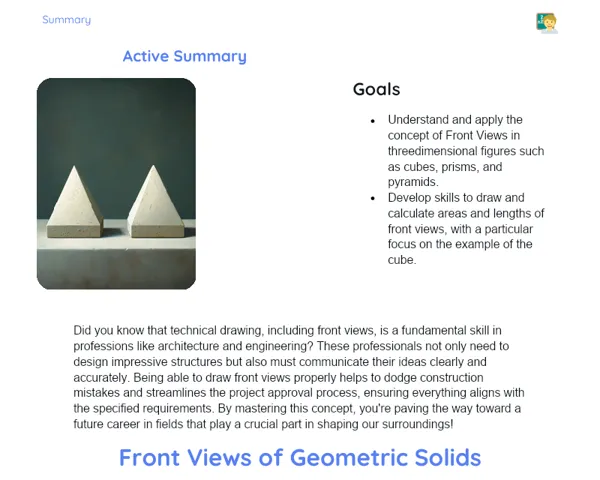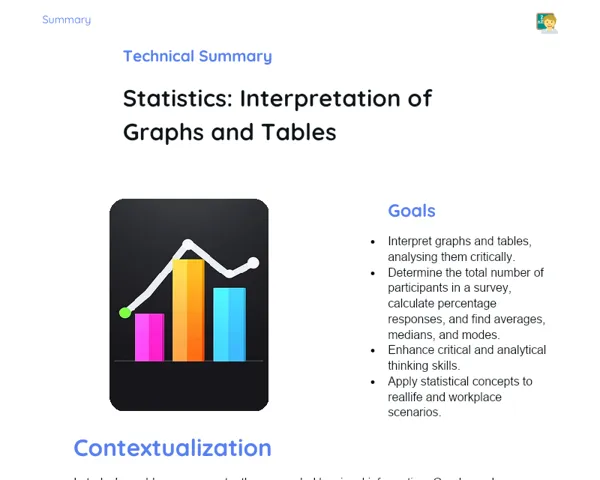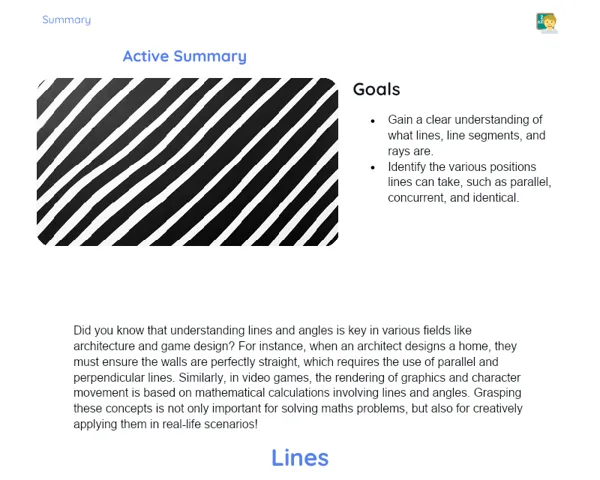Summary Tradisional | Side, Radius and Apothem of Inscribed and Circumscribed Polygons
Contextualization
In this lesson, we delved into the concepts of inscribed and circumscribed polygons in circles. An inscribed polygon is one where all its corners touch the circumference of a circle, while a circumscribed polygon has all its sides touching an inner circle. These ideas are essential in various areas of mathematics and find application in dealing with symmetry, architecture, and even in nature.
For example, Roman architecture skilfully employed inscribed and circumscribed polygons to craft stable and visually appealing structures, much like the domes and circular forms of the Pantheon in Rome. In nature, the hexagonal honeycombs made by bees serve as a brilliant illustration of inscribed polygons, as this shape makes efficient use of space and materials. Grasping these geometric relationships is vital for tackling practical and theoretical problems involving these shapes.
To Remember!
Definition of Inscribed and Circumscribed Polygons
An inscribed polygon within a circle has its vertices on the circle's circumference. In simpler terms, the circle snugly fits around the polygon. This setup allows the polygon to leverage the circle's symmetry, leading to a range of interesting geometric properties. For instance, in a regular inscribed hexagon, all six corners touch the circle's edge, and the sides of the hexagon are equal to the circle's radius.
Conversely, a circumscribed polygon has all its sides touching an inner circle. Here, the circle fits snugly inside the polygon. The points where the polygon's sides touch the circle create a direct connection between the apothem (the distance from the circle's centre to the midpoint of any polygon side) and the radius of the inscribed circle. This arrangement is common in problems that involve maximising area or optimising space.
Grasping these definitions is crucial for solving geometric problems related to these figures. They lay a strong theoretical groundwork and have practical applications in various fields like architecture and design.
-
Inscribed polygon: vertices on the circle's circumference.
-
Circumscribed polygon: sides touching the inner circle.
-
Significance of definitions for solving geometric problems.
Relationship Between Side, Radius, and Apothem in Regular Inscribed Polygons
In regular inscribed polygons in a circle, the radius is the distance from the centre to any vertex of the polygon. This relationship is fundamental to understanding how the sides of the polygon relate to the circle. For example, in an inscribed equilateral triangle, all three corners touch the circle's edge, with the radius being the distance from the centre to any of those corners.
The apothem, which is the distance from the centre of the circle to the midpoint of one side of the polygon, also plays an important role. In regular polygons, there's a fixed mathematical relationship between the polygon's side, the radius, and the apothem. For instance, for a regular inscribed hexagon, the apothem is equal to the radius multiplied by the square root of three divided by two.
Recognising these relationships allows for accurate calculation of the polygon's side from the radius or the apothem, and vice versa. This skill is essential for solving geometric issues involving the construction or analysis of inscribed polygons.
-
Radius: distance from the circle's centre to a vertex of the polygon.
-
Apothem: distance from the circle's centre to the midpoint of a side of the polygon.
-
Fixed mathematical relationship among side, radius, and apothem in regular inscribed polygons.
Relationship Between Side, Radius, and Apothem in Regular Circumscribed Polygons
In regular circumscribed polygons, the radius of the inscribed circle equals the polygon's apothem. This relationship is key to understanding how the polygon's sides are tangent to the inner circle. For instance, in a square surrounding a circle, the apothem is the distance from the circle's centre to the midpoint of any side of the square and it equals the circle's radius.
Additionally, there is a fixed relationship between the side of the polygon, the radius of the circumscribed circle, and the apothem. For example, in a circumscribed equilateral triangle, specific formulas can express the relationship between the triangle's side and the radius of the inscribed circle, simplifying geometric problem-solving.
Grasping these relationships is critical for handling problems related to the construction or analysis of circumscribed polygons. This encompasses calculating the polygon's side from the radius or the apothem, and vice versa.
-
The inscribed circle's radius equals the apothem of the circumscribed polygon.
-
Fixed relationship among side, radius of the circumscribed circle, and apothem.
-
Crucial for solving geometric problems of circumscribed polygons.
Practical Examples
To reinforce the concepts discussed, it's beneficial to engage with practical examples. A classic case is figuring out the side of a regular hexagon inscribed in a circle with a radius of 10 cm. In this scenario, since the side of the hexagon matches the circle’s radius, the side will also measure 10 cm. This straightforward example showcases the direct correlation between the radius and the side in regular inscribed polygons.
Another example involves a square circumscribed around a circle. If the square’s side measures 14 cm, we can calculate the circle's radius using the square's diagonal formula. The square's diagonal is 14√2 cm, and since the radius is half of this diagonal, it will be 7√2 cm. This example illustrates how to apply the relationship among the side, diagonal, and radius in circumscribed polygons.
A third scenario is determining the side length of an equilateral triangle inscribed in a circle with a radius of 6 cm. Using the formula L = R√3, where L is the side of the triangle and R is the circle’s radius, we find that the triangle’s side measures 6√3 cm. This example highlights the practical use of the discussed formulas to tackle geometric issues.
-
Inscribed hexagon: side equals the circle's radius.
-
Circumscribed square: radius is half of the square's diagonal.
-
Inscribed equilateral triangle: relation L = R√3.
Key Terms
-
Inscribed Polygon: A polygon whose vertices all lie on the circumference of a circle.
-
Circumscribed Polygon: A polygon that has all its sides tangent to an inner circle.
-
Radius: Distance from the centre of the circle to any vertex of the polygon.
-
Apothem: Distance from the centre of the circle to the midpoint of a side of the polygon.
-
Side: Line segment linking two consecutive vertices of a polygon.
-
Regular Hexagon: A six-sided polygon with equal sides and equal internal angles.
-
Equilateral Triangle: A three-sided polygon with equal sides and equal internal angles.
-
Square: A four-sided polygon with equal sides and right angles (90 degrees).
Important Conclusions
In this lesson, we unpacked the ideas of inscribed and circumscribed polygons in circles, exploring their definitions and essential geometric relationships between sides, radii, and apothems. These concepts are pivotal when navigating geometric problems involving symmetry and space optimisation, with real-world applications in both mathematics and fields such as architecture and design.
We provided detailed insight into calculating the sides of regular inscribed and circumscribed polygons, utilising specific formulas connecting these elements. Practical examples featuring triangles, squares, and hexagons were shared to illustrate how to apply these formulas and enhance students' comprehension.
The significance of this knowledge extends beyond the classroom, empowering students to recognise and utilise these concepts in everyday situations, such as constructing architectural designs and analysing natural patterns. We encourage students to further investigate this topic to enhance their understanding and cultivate practical geometry skills.
Study Tips
-
Revise the mathematical formulas discussed in class, practicing their application across various types of regular inscribed and circumscribed polygons.
-
Create and build models of inscribed and circumscribed polygons using a ruler and compass to visualise the geometric relationships better.
-
Solve additional problems involving calculations of sides, radii, and apothems to enhance understanding and gain confidence in applying the concepts.



